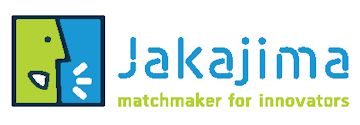by Gaia Di Martino, Hochschule Ruhr West
Nowadays more and more people are intrigued by 3D food printing; but most of the 3D printers for food require a certain practical experience to be used at their best. On top of that, often these machines are hard and time consuming to be cleaned. This is how the idea of a new 3D printer was born: a machine that combines the perks of a greater automation of a control system and the cleanliness of a new concept for the printing head. A cleaner and more hygienic 3D printer for food that can be used by anyone, no matter the level of expertise.
program: https://3dfoodprintingconference.com/program/
Interview
What drives you?
What drives me is simply the food: I have been passionate about food preparation my entire life. By growing older, more and more tools became available for me to give vent to this passion: from helping my parents cooking, to being in charge of cooking for my family, to graduating in Chemical and Food Processes Engineering and, eventually, to being part in the development of Cook.3D.
Why should the delegate attend your presentation?
I think the perspective in which we see food printing with Cook.3D is new and innovative: a machine that can be used by anyone, from the starred chef to the granddad who never cooked. Higher automation and more hygienic extrusion are the very focus in Cook.3D.
What emerging technologies/trends do you see as having the greatest potential in the short and long run?
I see a lot of emerging technologies with great potential. First of all, 3D printing, both for food and for polymers: in the first case, by developing a food 3D printer that is as easy to use as a normal kitchen robot, making people able to effortlessly prepare balanced and tasty meals; in the second case, by developing materials that are easy to be printed and printers that are easy to be used and fast, everyone could produce daily used object at home.
I find that Hydroponics is a very interesting innovative way of growing plants. And finally, I think that technologies that are being developed to catch and convert CO2 have a great potential.
What kind of impact do you expect them to have?
All these emerging technologies and fields of study may seem unrelated, but, for me, they all represent ways to reduce waste and to make everyone life easier and healthier; this is especially true if all these technologies are use in the same productive cycle: using trapped CO2 partly in hydroponics cultivation, partly to be converted in greener fuels to produce energy. Using additive manufacturing to produce object with no material waste and only when needed. Using food 3D printing to prepare healthy and customized meals with spending a very little amount of time.
What are the barriers that might stand in the way?
Developing these technologies requires time and funds, and not always they are easily available. On top of that, I think it may be hard to change people habits and perspectives. But I believe that this barriers may slow down the developing process, but not stop it.
“Special quote”
Not everyone has always the chance to cook, but everyone should be able to enjoy special foods every meal.
About Gaia di Martino
Gaia Di Martino graduated in Politecnico di Torino with a master degree in Chemical and Sustainable Processes Engineering, specialization in food processing. She is working as Scientific Assistant in Hochschule Ruhr West since February 2019 for the project Cook.3D.
About Hochschule Ruhr West
The Hochschule Ruhr West is a University of Applied Science founded in 2009, consisting of two campus: in Mülheim an der Ruhr and in Bottrop. HRW reasearch are mainly focused on embedded systems and automation as well as energy systems and economics. The campus in Bottrop houses the FabLab, where various projects are developed, including food 3D printing, robots and devices for people with special needs.
